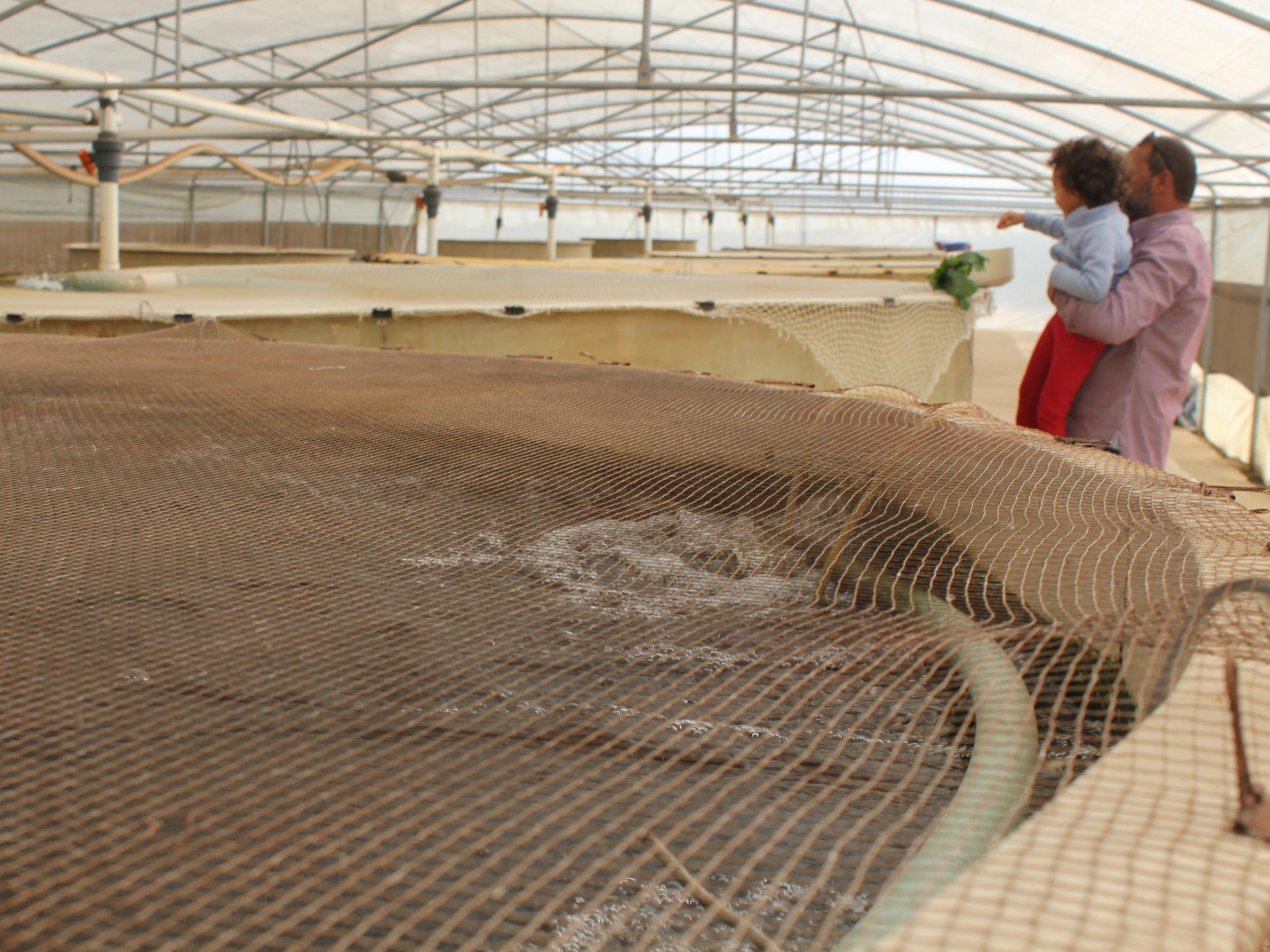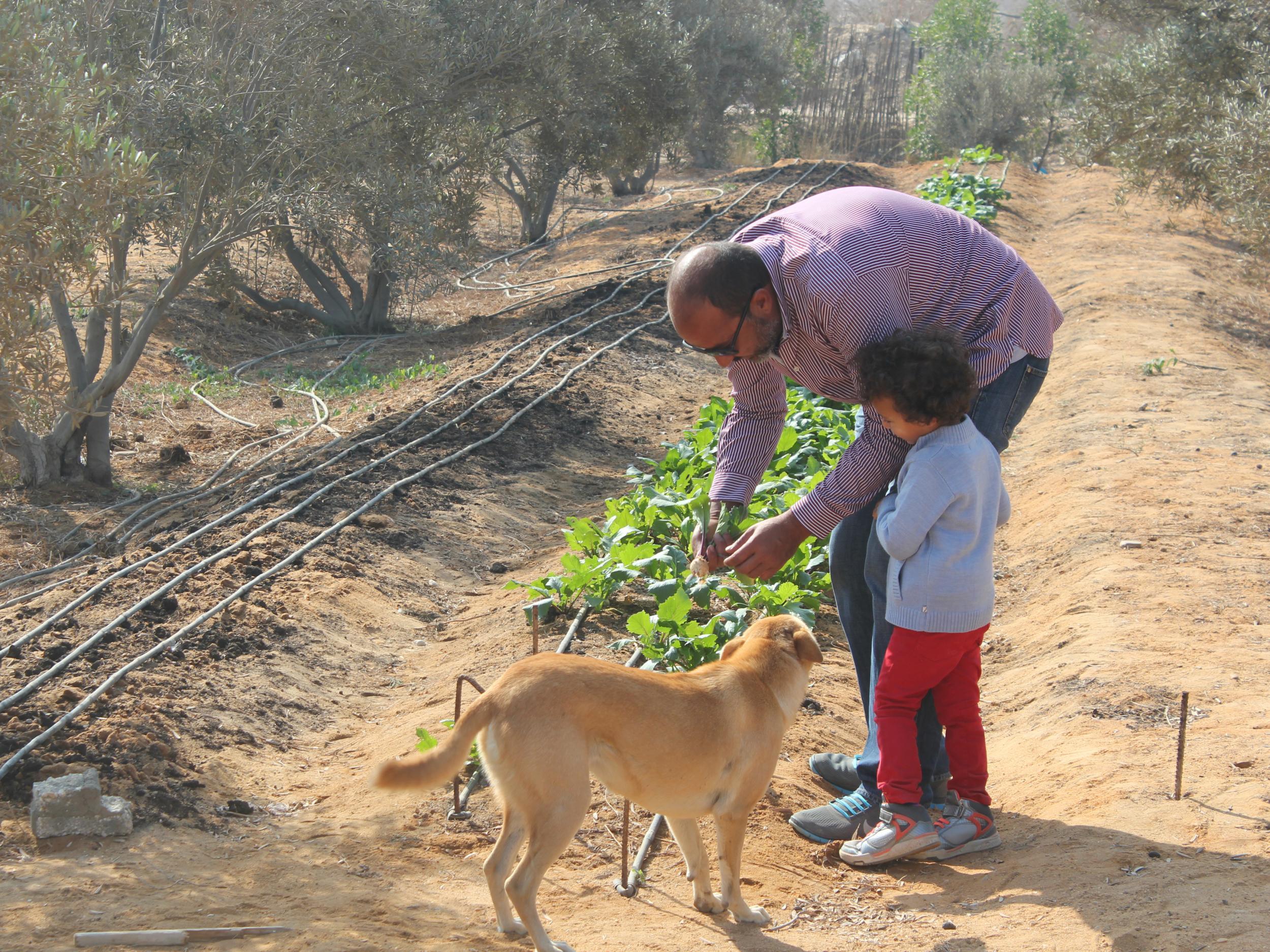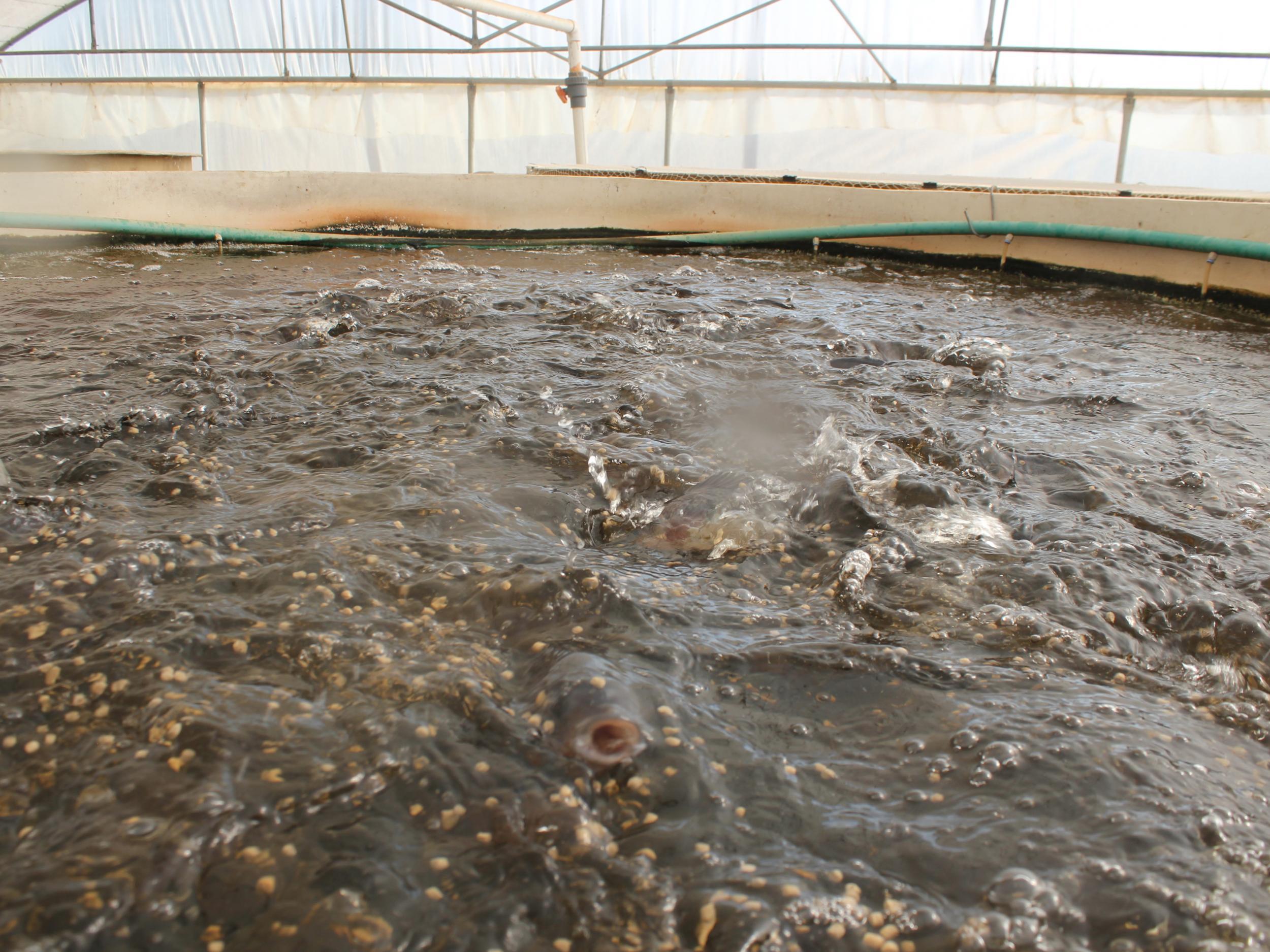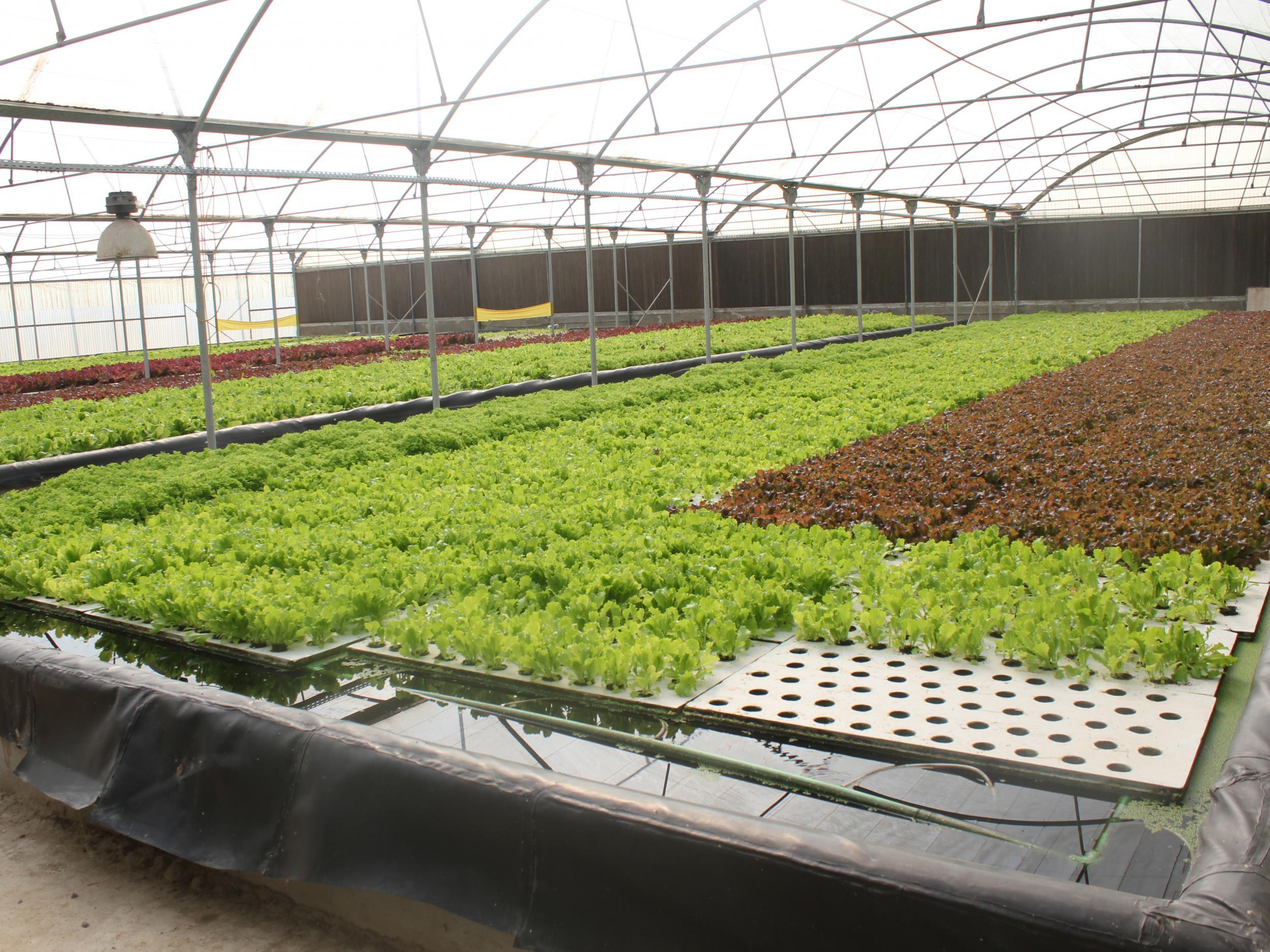How to farm fish in the Egyptian desert
On an eight-acre aquaponics farm 20 miles west of Cairo, fish are making a splash – they are being used to grow crops sustainably. Eddie Bower explains

Your support helps us to tell the story
From reproductive rights to climate change to Big Tech, The Independent is on the ground when the story is developing. Whether it's investigating the financials of Elon Musk's pro-Trump PAC or producing our latest documentary, 'The A Word', which shines a light on the American women fighting for reproductive rights, we know how important it is to parse out the facts from the messaging.
At such a critical moment in US history, we need reporters on the ground. Your donation allows us to keep sending journalists to speak to both sides of the story.
The Independent is trusted by Americans across the entire political spectrum. And unlike many other quality news outlets, we choose not to lock Americans out of our reporting and analysis with paywalls. We believe quality journalism should be available to everyone, paid for by those who can afford it.
Your support makes all the difference.Driving up to his eight-acre farm, 45-year-old Faris Farrag waves disparagingly at the construction work that surrounds him. “This is all new,” he says, pointing at what looks to be a residential villa under construction. “It just used to be olive trees here.” The land around his little plot, once the site of hardy desert farms, is being slowly swallowed by the growing satellite city of Sheikh Zayed, 20 miles west of Cairo. “And it’s happening all over the country,” he says.
The loss of its farmland is just one of the ecological problems Egypt faces these days, with the United Nations now officially calling it a “water scarce” country, and a population that continues to grow by around two million a year. But as the country approaches what some are calling a “water crisis,” Farris is one of a new generation of entrepreneurs stepping into the fray. An ex-City banker with an American education, he cuts an odd figure walking between the olives trees that for most of their lives were tended by rural farmers. And just like Farrag, there is nothing traditional about his operation. On this dusty plot of scorched sand, sandwiched between the highway into Cairo and the Hyper One shopping mall, he doesn’t just produce dates and olives. His major income comes from artisanal lettuce, organic herbs, and vast kilos of freshly filleted fish.
His business, Bustan, which means “garden” in Arabic, is the first major aquaponics farm in Egypt, a system whereby fish reared in tanks exchange water with plants grown nearby. The idea is that the plants clean the water of fish waste – ammonia, in particular – and in return, the fish fertilize the plants. “You feed the fish and the fish feed the plants,” says Farrag, explaining why unlike most Egyptian farms, his uses minimal added nutrients.

It’s also a much more sustainable system than traditional farming. As nearly all the water is recycled, the entire farm only loses around 1500 m3 of water a year – less than that used by one UK citizen annually. Since drawing up the groundwater he needed to fill the system from the large Nubian Sandstone Aquifer beneath him, all he does now is top up the negligible amount he loses from leakage and evaporation. With this water, Bustan’s able to harvest 30-35 tonnes of Nile Tilapia, and around 80 tonnes of green-leaf vegetables a year, all in the midst of the scorching Sahara desert. “We’re the largest producer of baby leaf in Egypt,” says Farrag, proudly, “and probably in the region.”
Farrag set up Bustan shortly after returning to Egypt in 2011. Following the ouster of president Mubarak, as part of what the media then dubbed The Arab Spring, he became caught up in the wave of altruism that swept through the country that year, and was one of thousands of Egyptian expats who flew home to lend his efforts to the cause. “We're trying to address, in our own little way, the inefficiencies of agricultural water use in Egypt,” he says.
The Egyptian water issue is complicated, and tied up with a host of other problems, such as that of arable land getting snapped up by developers or illegal construction workers. With the population growing at breakneck speed, and particularly since the turbulent period following 2011, Egypt’s limited agricultural land has started to shrink as more and more homes have been built on what used to be fertile soil. In 2015, the Agricultural Ministry reported 1.3 million cases of illegal land grabs, encompassing 60,000 acres, which led the government to impose strict fines and jail sentences on offenders as well as launching the “Don’t sell your land” campaign.

Such efforts have had little impact, though, and every year the amount of land suitable for growing food shrinks as farmers continue to give into high land prices and sell up. As Farrag points out: “The flow is going both ways.” While metropolitan city dwellers like him are starting to turn their attention to food cultivation, “a lot of the traditional farmers are getting out of farming,” he says. “Urbanisation is devastating farmlands. We're leaving our farmlands and trying to farm the desert. We should be doing the opposite.”
Given this trend, it’s another way in which aquaponics might be able to help. The methods used by at Bustan produce around 1,000 percent more crops per square-meter than traditional farming methods; and because it reuses water, the system can operate almost anywhere in the country. “We would never put our agricultural systems on good farming land,” says Farrag. “I say to farmers: ‘Give me your worst five acres. Give me the rockiest five acres that are no good for production and I'll give you three or five times the production you would get off that land.’”
But aquaponics isn’t without its drawbacks. According to Dr. Richard Tutwiler, the director of the American University in Cairo’s Research Institute for a Sustainable Environment: “The big issue is the market share. It costs a lot to set these systems up, so therefore what you produce you have to sell at a fairly high price.”

Bustan has managed to stay profitable, carving out a niche brand among the organic-eating elites of Cairo, and supplying directly to the city’s top restaurants, but you won’t find any of their products down the local market. After paying to build a sophisticated seven-system aquaponics set up from scratch, Farrag has to price his products high to see a return. His biggest customers include the likes of Gourmet Egypt—something akin to the US-based retailer Wholefoods—where the well-heeled clientele wouldn’t think twice about paying 15-times the market price for a sustainably grown head of organic lettuce. With a large discerning upper-class in Egypt, there are enough customers to balance the books at Bustan, but for the majority of the country, aquaponically grown baby leaf remains a luxury too far.
Its an issue that another group of young Egyptian entrepreneurs are trying to tackle. Agrimatic is a start-up that designs different systems that also aim to grow crops sustainably. Founded a few years ago by a group of recent graduates, one of its main aims is “to combat many of the root causes of food scarcity not just in Egypt and the MENA region, but also the world.” To this end, they aren’t just promoting aquaponics in Egypt, but helping to develop new systems that will bring the cost of produce down and be accesible to more consumers.
“So far we’ve been working with more or less the standard technology with minor tweeks,” says Agrimatic’s business manager Nouran Said, “but we need to achieve a low cost strategy to render goods more affordable.” The startup, which spends much of its time involved in research and development, is focussing on ways that can make aquaponics not just cheaper, but easier for experienced Egyptian farmers to adapt to. “Aquaponics is a very complicated process that requires a lot of specialists and constant monitoring,” she says, “and it’s often not feasible, especially on smaller scale farms. That’s why we’re working on a new user-friendly system that automates a lot of the processes.”

Slowly, the idea is taking off, with both the public and private sector taking note of what aquaponics has to offer the country. “When I started I was the only one,” says Farrag. “There's now a network and we talk to each other. We're trying to put more organization between aquaponic farmers together. We co-operate with each other rather than compete.” While aquaponics was unheard of in Egypt just a decade ago, there are now a number of new businesses opening up and expanding all the time. Farrag himself is currently looking to purchase a second site, and is talking about growing for export to Germany, the Netherlands, and the Gulf.
But, due to its high startup costs and selective customer base, it remains a niche enterprise, and its impact is limited. The vast majority of Egypt’s food still comes from traditional farmers using wasteful techniques such as flood irrigation, where water from the Nile is allowed to pour over their fields, only to evaporate or soak into the ground. Even once crops are harvested, inefficiencies in the supply network means “60 percent of crops never make it from farm to fork,” says Tutwiler. “It’s wasted on the way.”
Nevertheless, analysts like him aren’t discounting the new ground being broken by the younger generation. “I do see a kind of revolution,” says Tutwiler. “It’s gonna be driven in many ways by the economy.” As the population continues to grow and further outpace domestic food supply, the price of imports can only go up. For this reason, Tutwiler expects to say innovative methods like aquaponics become more important. “I think we have to inevitably move in that direction,” he says, “and the pace of change is accelerating.”
Join our commenting forum
Join thought-provoking conversations, follow other Independent readers and see their replies
Comments